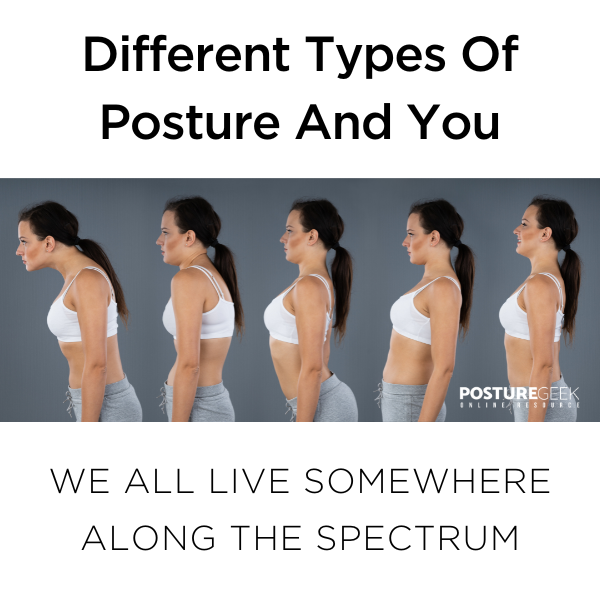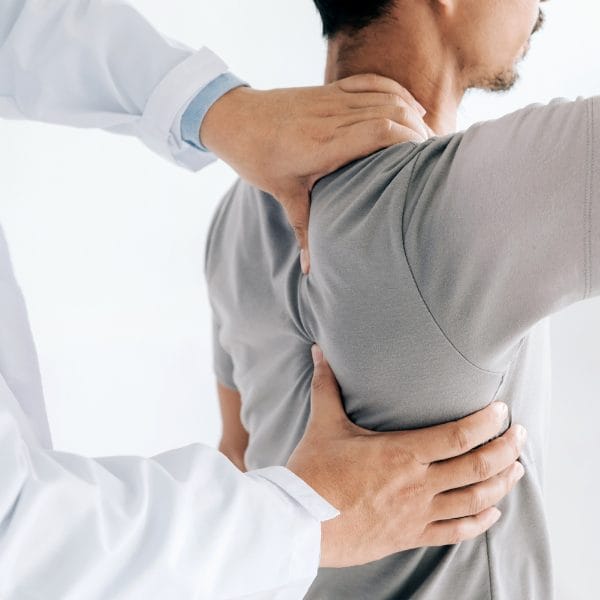Find Your Ideal Practitioner Today
Discover a community of expert practitioners dedicated to improving your posture and overall health.
Different types of posture and you
Understanding your posture is more than just a passing fad or the latest “new thing” in health and fitness. Posture is important for your overall health, and maintaining good posture should be a lifelong priority.
How is it that we can identify someone from a distance as a friend or family member? Is it their hair color, clothes, or manner of walking that allows us to do so?
It’s not unusual for it to extend further than this, with an attitude reflected in types of posture, gait, or standing position. The upright standing posture is the beginning, not an end, to uncovering our potential for a body aligned with healthy posture habits.
The effects of poor posture on posture patterns.

“Proper posture is believed to be the state of musculoskeletal balance that involves a minimal amount of stress and strain on the body” (Yip et al, 2008, p. 148)
Many people do not give poor posture a second thought, even though it can sometimes lead to serious health issues. This is understandable – we often only seek help when we are in pain (just like we see the dentist only when our teeth hurt).
However, ignoring these problems will not make them go away.
When our posture is disturbed by habit, accident, injury, or other non-painful problems, we risk developing postural dis-ease.
Before you start practising good posture, it is essential to understand the following elements.
Tight muscles
Tight muscles are a common cause of poor posture. When muscles are tight, they pull on the bones they are attached to, causing the bone to move out of alignment.
Tight muscles can also cause joint pain and dysfunction. For example, tightness in the chest and shoulders can pull the shoulder blades out of alignment and cause neck and upper back pain.
Weak muscles
Weak muscles are also a common cause of poor posture. This is because weak muscles cannot hold the bones in alignment as strong muscles can.
This can lead to joint pain and dysfunction and further muscle weakness. For example, weak abdominal muscles can cause the pelvis to tilt forward, leading to lower back pain.
Spine
There are three natural curvatures in the spine – at the neck (cervical), mid-back (thoracic), and lower back (lumbar).
Good neutral posture requires that these three curves are present and balanced.
If the spine is not in its natural state, it can cause problems. For example, suppose the lower back is excessively curved ( lordotic ). In that case, it can put pressure on the discs and nerves in the spine, leading to back pain and other problems.
Kyphosis
Kyphosis is excessive rounding of the upper back. The shoulders will appear hunched, and the head may be thrust forward. This can result from slouching but may also be due to muscle imbalances or spine deformities.
Lordosis
Lordosis is an excessive arching in the lower back. As a result, the pelvis will tilt forward, and the stomach may protrude. This can be caused by pregnancy, obesity, or weak abdominal muscles.
Both of these posture types can lead to pain and dysfunction. If you suspect you have either of these, consult a healthcare professional for an assessment.
Discover a practitioner near you.
Looking for a practitioner near you? Our extensive network of qualified professionals is here to help you.
Pelvis
The pelvis is the bowl-shaped bone at the base of the spine. It supports the spinal column and protects the organs in the lower abdomen.
The pelvis should be level, with the hips and shoulders balanced. When it is not, it can lead to pain and dysfunction. For example, if the pelvis tilts forward ( anteversion ), it can cause the lower back to arch excessively (lordosis).
If the pelvis tilts too far backward ( retroversion ), it can compress the nerves in the lower back and cause pain – including leg pain.
Pelvic Tilt and your Posture
Pelvic tilt is a forward or backward tilt of the pelvis.
An anterior pelvic tilt (APT) is when the front of the pelvis tilts down, and the back of the pelvis tilts up. This can give the appearance of an increased arch in the lower back.
A posterior pelvic tilt (PPT) is when the front of the pelvis tilts up, and the back of the pelvis tilts down. This can make the buttocks appear more prominent.
Muscle imbalances often cause a pelvic tilt in the hip or abdominal muscles. It can also be caused by pregnancy, obesity, or wearing high heels.
Pelvic tilt can lead to lower back, hips, or knee pain. If you suspect you have pelvic tilt, consult a healthcare professional for an assessment.
Head, neck, and shoulders
There are several reasons your head, neck (cervical spine), and shoulder posture may be affected. First, poor posture habits, such as slouching, can lead to muscle imbalances in the neck and shoulders. This can cause pain and dysfunction.
Also, is your chin thrust forward? Are your shoulders hunched? Is your head leaning forward? These are all common posture problems that can lead to pain and dysfunction.
Abdominal muscles (core)
The abdominals are a group of muscles that run from the chest to the pelvis. They help to support the spine and maintain good posture.
Weak abdominal muscles can lead to posture problems, such as lordosis, kyphosis, and pelvic tilt. Conversely, strong abdominal muscles are essential for good posture and can help to prevent these problems.
Common patterns associated with the upper body are:
Forward Head Posture:
This is where the head sits too far forward on the shoulders and can often lead to headaches, neck tension, and upper back pain.
Rounded Shoulders Posture:
With the shoulders forward, there is an increased chance of pain in the traps (upper back region) and neck. As with the forward head posture, you will appear in a hunch forward position.
Downward Rotation of Scapula:
The shoulder blades wing out and down, often due to tightness in the chest.
So What Are These Common Posture Types?

While we take on many compensations that make it hard to say we are just one posture type, characteristics can be grouped into generalized patterns. These can be seen as:
Anterior pelvic tilt increased lumbar curve, head and shoulders rolled forward.
Anterior pelvic tilt increased lumbar curve, head and shoulders rolled forward.
Anterior pelvic tilt, with increased lumbar curvature, and hips rolled under.
Posterior pelvic tilt decreased lumbar curve, head and shoulders rolled back.
Numerous posture types exist, each of which can cause pain in unique areas. Therefore, consulting a professional to identify your specific posture type and corresponding solutions is crucial for maintaining comfort.
These poor posture patterns can affect the natural curves of the Thoracic Spine and Lumbar Spine. Which can then provide meaningful clues as to what is happening with your body with two (2) different questions:
- What muscle groups are working too hard?
- What muscle groups aren’t working hard enough (weak muscles)?
Scoliosis and healthy posture
Scoliosis is a sideways curve of the spine that can occur in any age group but is most commonly diagnosed in adolescence. The cause of scoliosis is unknown in most cases. Still, it is believed to be a combination of genetic and environmental factors.
While scoliosis is not painful, it can lead to pain if the spine curve is severe enough to compress the nerves or restrict the lungs and heart. If you suspect you or your child has scoliosis, consult a healthcare professional for an assessment.
Scoliosis does not have to be a life-long condition. With early detection and treatment, most people with scoliosis can improve their posture and prevent the condition from worsening.
Sitting Posture

When we think of posture, we often think of standing posture. However, we spend most of our day sitting, so it is also essential to have a good sitting posture.
Good sitting posture means that your spine is in a neutral position, your shoulders are down and back, and your chin is level with the ground. In addition, you should feel balanced and supported by your chair.
If you have poor posture, it can lead to neck pain, shoulder pain, and back pain. It can also cause fatigue and muscle tension. Also, avoid sitting in the same position for prolonged periods, as this can lead to stiffness and pain.
Improving your sitting posture is a simple way to reduce pain and improve your overall health.
When Things Appear To Go Wrong With Your Posture.
When we are in pain or discomfort, our first impulse is to alter it. You look for a therapist to assist you in working on the problem area as you do for everyone else. If things don’t improve, you might question what’s wrong and what can be done.
At this point, a more comprehensive view of the situation is required. Again, a trained therapist may help with this. Alternatively, we could try out easy methods that might assist us along the way.
On your journey to "perfect posture": What To Expect In A Posture Assessment?

To find out what is going on, a posture assessment is a great place to start. A posture assessment looks at how your body is positioned and moves in space. It can help identify any areas of imbalance or compensation.
A posture assessment will give your therapist an understanding of what is happening with your posture. This will help them identify any problems and develop a plan to improve your posture. The assessment will involve:
- Asking you about your medical history and any pain you are experiencing
- Observing your posture
- Measuring your range of motion
- Doing some tests of your strength and flexibility
Based on the results of the assessment, your therapist will be able to recommend a treatment plan. This may involve:
- Exercises to improve your strength, flexibility, and range of motion
- Manual therapy to release tight muscles and help improve range of motion
- Education on posture and how to improve it
- Ergonomic advice on how to set up your workstation or home environment
- Posture aids or devices to help you maintain good posture
- A follow-up appointment to check your progress
Finally
The most important takeaway from all this is that your posture is essential for your overall health and wellbeing. Poor posture can lead to pain, fatigue, and muscle tension. Good posture, on the other hand, can help us to avoid these problems.
If you are experiencing pain or discomfort, a posture assessment is a great place to start. This will help identify any areas of imbalance or compensation. Based on the results of the evaluation, your therapist will be able to recommend a treatment plan. This may involve exercises, manual therapy, education, and/or the use of posture aids or devices.
Join our conversation online and stay updated with our latest articles.
Find Expert Posture Practitioner Near You
Discover our Posture Focused Practitioner Directory, tailored to connect you with local experts committed to Improving Balance, Reducing Pain, and Enhancing Mobility.
